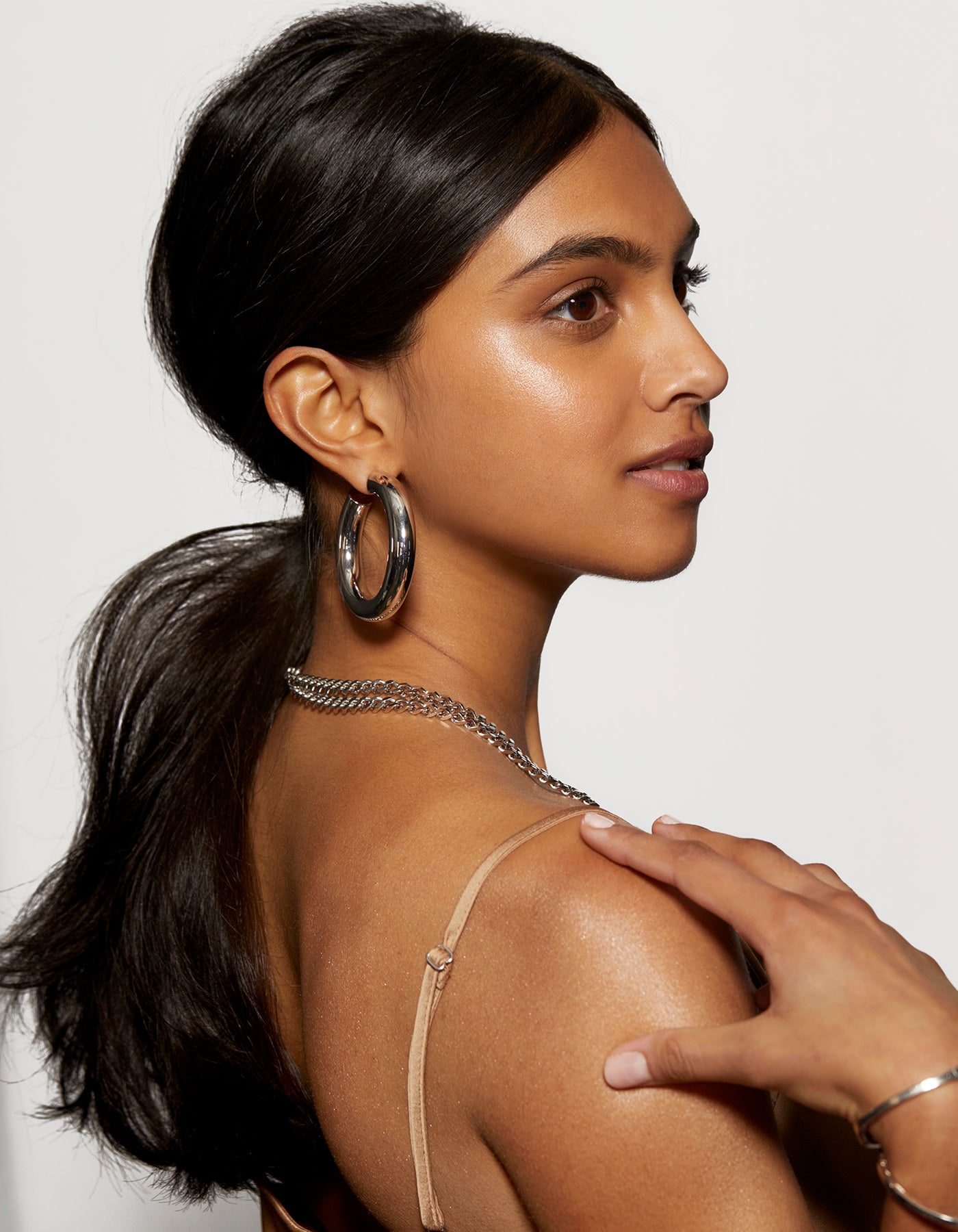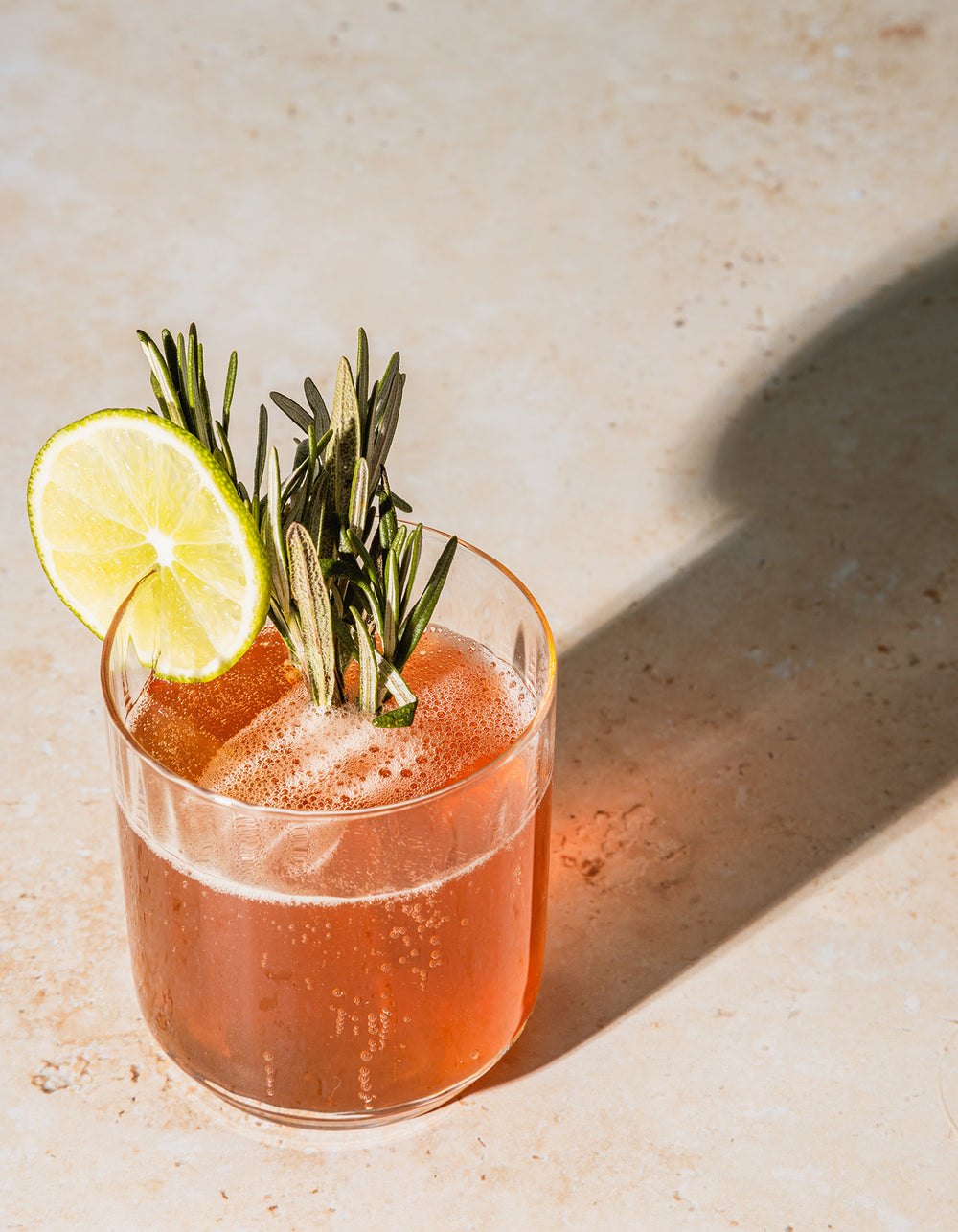Diary / Beauty / Sep 26, 2022
UV Protection for Hair: How to Protect From the Summer Sun
Written by: Jessie Quinn
Photography by: Ben Ritter

With summer in full swing, it’s your sun protection arsenal’s time to shine. But, we’re not just talking about slathering SPF onto your skin and remembering to reapply—your hair needs sun protection, too. With so much exposure to the sun’s harsh UV rays (especially UVA rays, which make up about 95% of the radiation that reaches us, and are responsible for hair and skin damage), your hair needs a little extra love by way of sun protection during the summer season.
Up ahead, we take a closer look at how the sun can damage hair, plus how to protect your strands from potential damage.
How the Sun Can Damage Hair
“UV rays from the sun are electromagnetic waves of different lengths and capable of causing chemical reactions on compounds like lipids, hair protein links that create elasticity and bounce, and on melanin or hair pigmentation, which also provides strength to the structure of the cuticle,” says hair stylist Hervé Claude Bernard. Due to this occurrence, exposure to the sun—especially for longer lengths of time—can cause sun damage in hair by breaking down the proteins and melanin necessary for healthy strands. Bernard says this can result in faded color, as well as brittle hair, moisture loss, and breakage. “Hair that becomes frizzy in this process is even more vulnerable as it separates itself from the rest and battles the elements alone,” he explains, adding that, because gray hair doesn’t have a lot of melanin, it is particularly vulnerable to added stresses from the sun.
Summer Sun Protection
Summer is a great time to absorb the sun’s vitality-boosting vitamin D. On top of having positive effects on the body and mind, Bernard says the nutrient is also essential to hair health. “It can stimulate hair follicles to sustain a complete cycle of re-growth as old hair falls off,” he explains. “It may also help clear scalp conditions such as acne, eczema, psoriasis, and even fungal infections that are often materialized by dandruff,” he adds.
With that said, the sun’s UV rays can do some damage to hair without proper care and protection. “The sun’s UV rays through extended sunlight can wreak havoc on your hair, leaving it discolored, brittle, frizzy, and dull,” Bernard explains, noting how these responses to the environmental stresses can cause broken strands and split ends. Add on the effects of some of our favorite summertime activities—like swimming in the salty ocean or chlorinated pools—and it’s safe to say that hair needs a little extra love in the warmer season.

Expert-Approved Tips for Sun Protection
When it comes to protecting hair from the sun’s damage, Bernard says the secret lies in moderation. Here are his go-to tips for sun protection and ensuring hair stays hydrated and healthy all season long.
Time Sun Exposure: Limiting exposure to the sun is a give-in, but there are certain times of day that are extra important to consider. “Try limiting your hair exposure to early mornings or late afternoons, when the sun rays are less powerful,” says Bernard.
Style With a Hat: Hats aren’t just stylish, they’re functional. Bernard recommends wearing a large brim hat while in the sun as it’s “the most efficient way to protect your hair.” When shopping for a hat, be sure to check that it has UPF, which is fabric’s version of SPF.
Apply SPF: Bernard also recommends spraying strands—especially the scalp—with an SPF spray or balm “that will block, bounce, or otherwise scatter the damaging sun rays.” One without ingredients like Titanium Dioxide and Zinc works best for hair, as they are heavy and “weigh your hair down, or force you into multiple shampoos to get rid of the greasy residue.”
Style Hair in a Top Bun: Top knot styles are a summer must because they can “hide and protect most of your scalp and allow only a small amount of hair to be exposed,” says Bernard.
Change Up Your Part: Your scalp can be particularly vulnerable during the summertime, especially in direct sun. Bernard recommends changing your part often during the day (shifting it from side to side will suffice) to mitigate scalp exposure.
Switch Up Your Shampoo and Conditioner: “Use shampoos and conditioners that specifically remove chlorine and salt water from the hair without stripping the color,” Bernard recommends.













































 Miracle Balm
Miracle Balm
 Just Enough Tinted Moisturizer
Just Enough Tinted Moisturizer
 What The Foundation
What The Foundation


